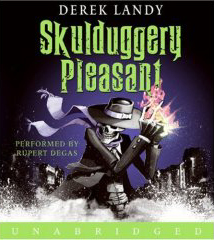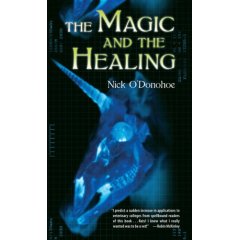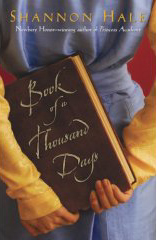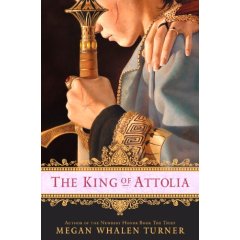The Absolutely True Diary of a Part-Time Indian
by Sherman Alexie
art by Ellen Forney
Reviewed February 4, 2008.
Little, Brown, and Company, New York, 2007. 230 pages.
Winner of the National Book Award for Young People’s Literature 2007
Starred Review
This book is awesome.
I read it simply because it had gotten a lot of attention on the listserv for young adult librarians. Some complained about some edgy content—like masturbation—and I tend to be sensitive to content like that, and don’t like things like that thrown in gratuitously, so I suspected I wouldn’t like it. It also sounded like a book with an agenda—the Native Americans were pushing it so hard—that I suspected I wouldn’t like it.
Well, I loved it. I don’t blame the Native Americans for urging us all to read it. I’m going to urge everyone to read it, and if I had a background at all similar to his, I know I’d be that much more vehement. If the book has an agenda, it’s so sensitively carried out, you don’t feel like you’re reading a message—just a wonderfully crafted story. I’m going to try very hard to get my 13-year-old son to read it, though if he ends up waiting a few years, that’s okay, too. Yes, conservative parents will probably want to prescreen this book before giving it to a younger teen. The book presents a hard look at tough realities of poverty—while keeping the readers laughing.
“Junior” Arnold Spirit, at fourteen, is a budding cartoonist.
I draw because words are too unpredictable.
I draw because words are too limited.
If you speak and write in English, or Spanish, or Chinese, or any other language, then only a certain percentage of human beings will get your meaning.
But when you draw a picture, everybody can understand it.
When Junior starts high school, and is given a math book so old it has his mother’s name in it, he gets mad.
The consequences of his angry reaction include Junior being advised to leave the reservation and attend the high school in Reardan, twenty-two miles outside the rez.
Junior goes to Reardan, but the others on the rez hate him for it—especially Rowdy, who’s been his best friend all his life.
They stared at me, the Indian boy with the black eye and swollen nose, my going-away gifts from Rowdy. Those white kids couldn’t believe their eyes. They stared at me like I was Bigfoot or a UFO. What was I doing at Reardan, whose mascot was an Indian, thereby making me the only other Indian in town?
The story of Junior’s freshman year at Reardan includes basketball showdowns between his new school and the reservation’s team—featuring his friend Rowdy. He navigates the scary world of a white high school, makes some friends, and suffers way more than his share of tragic losses.
That’s the true genius of this book. Sherman Alexie deals with some dreadful situations, but he effectively mixes in laughter, and the reader comes away with overwhelming hope, instead of the despair you would think you’d feel after reading a book about poverty and death and limited opportunities.
This book gave me a window into a world I knew little about, and it did it with affection, compassion, and pride.
I picked up this book at bedtime, and kept reading until I finished it. When I did, I set it down with a smile on my face. A wonderful and satisfying read. World-broadening, moving, and uplifting.
The review of this book on the main website is found at:
www.sonderbooks.com/Teens/part_time_indian.html






 The King of Attolia
The King of Attolia

